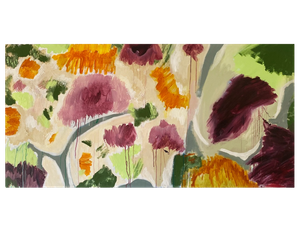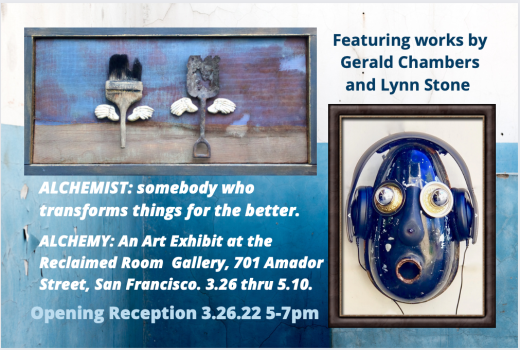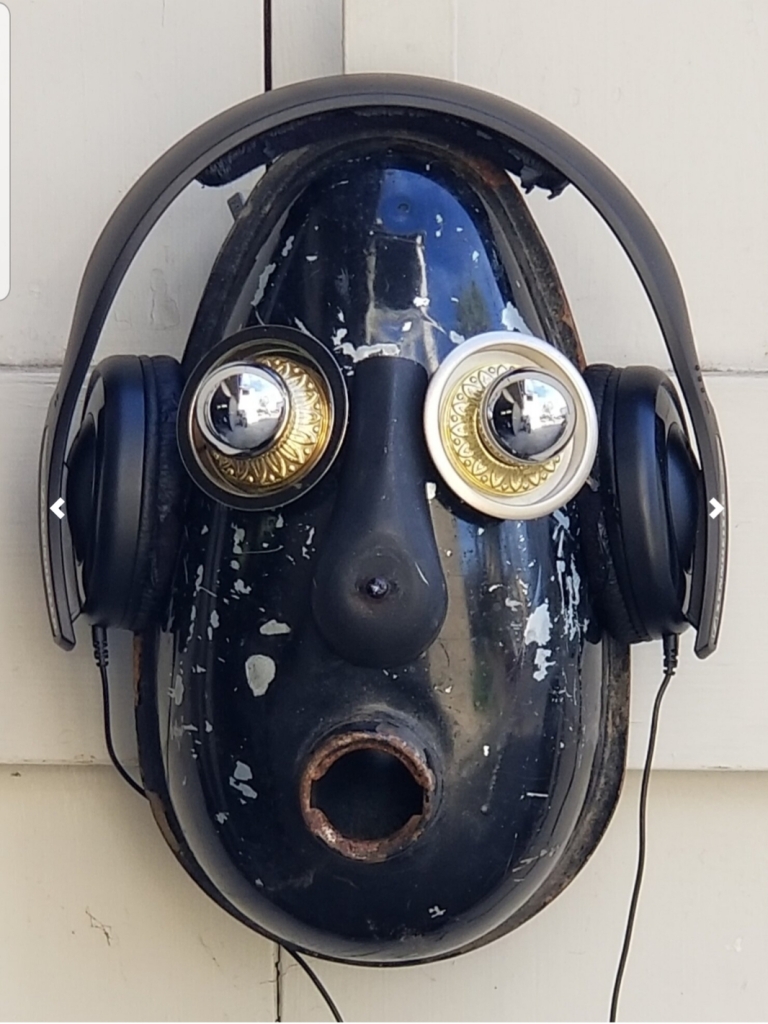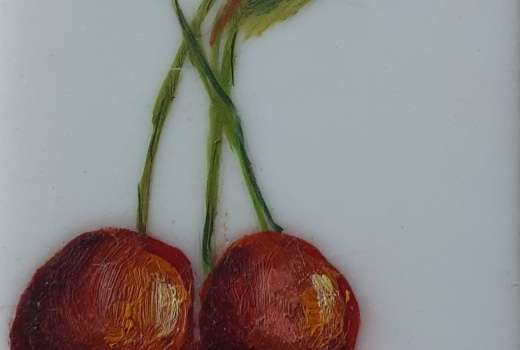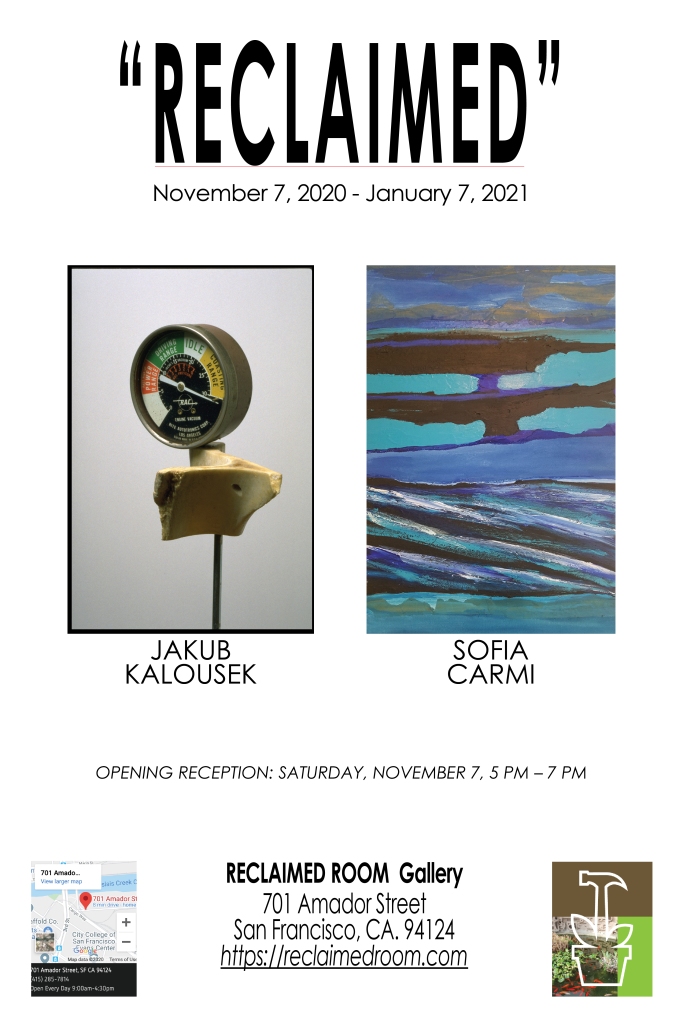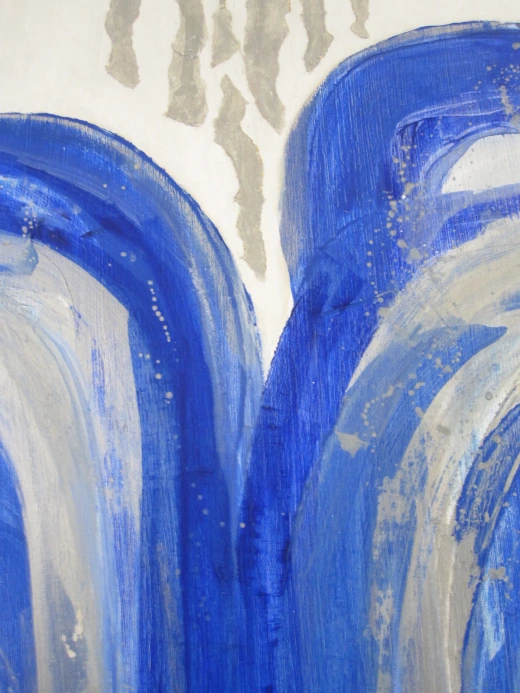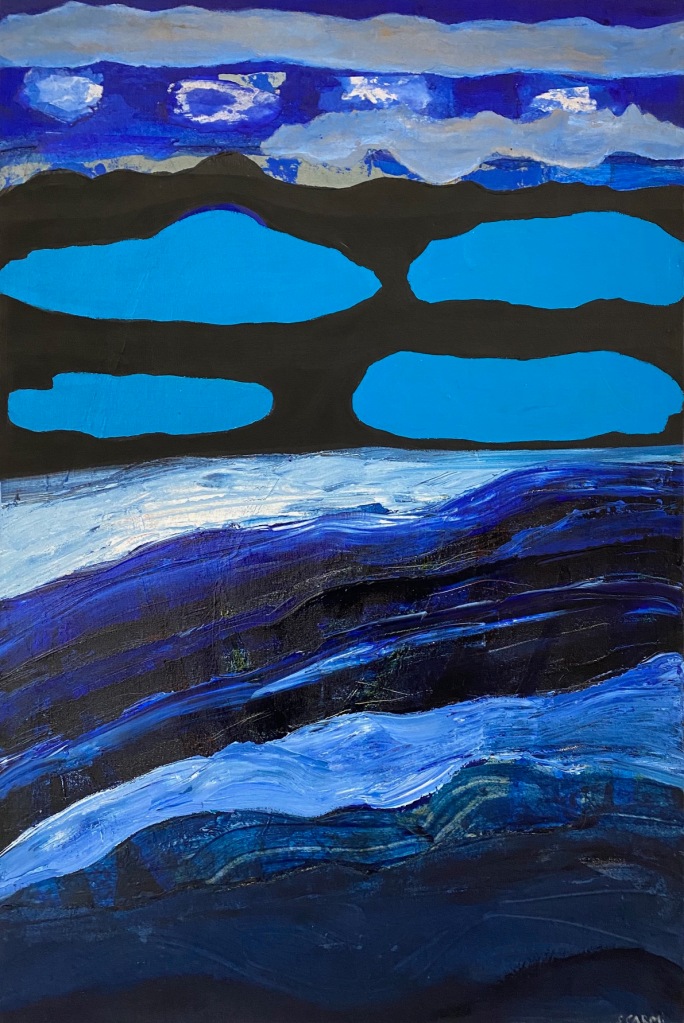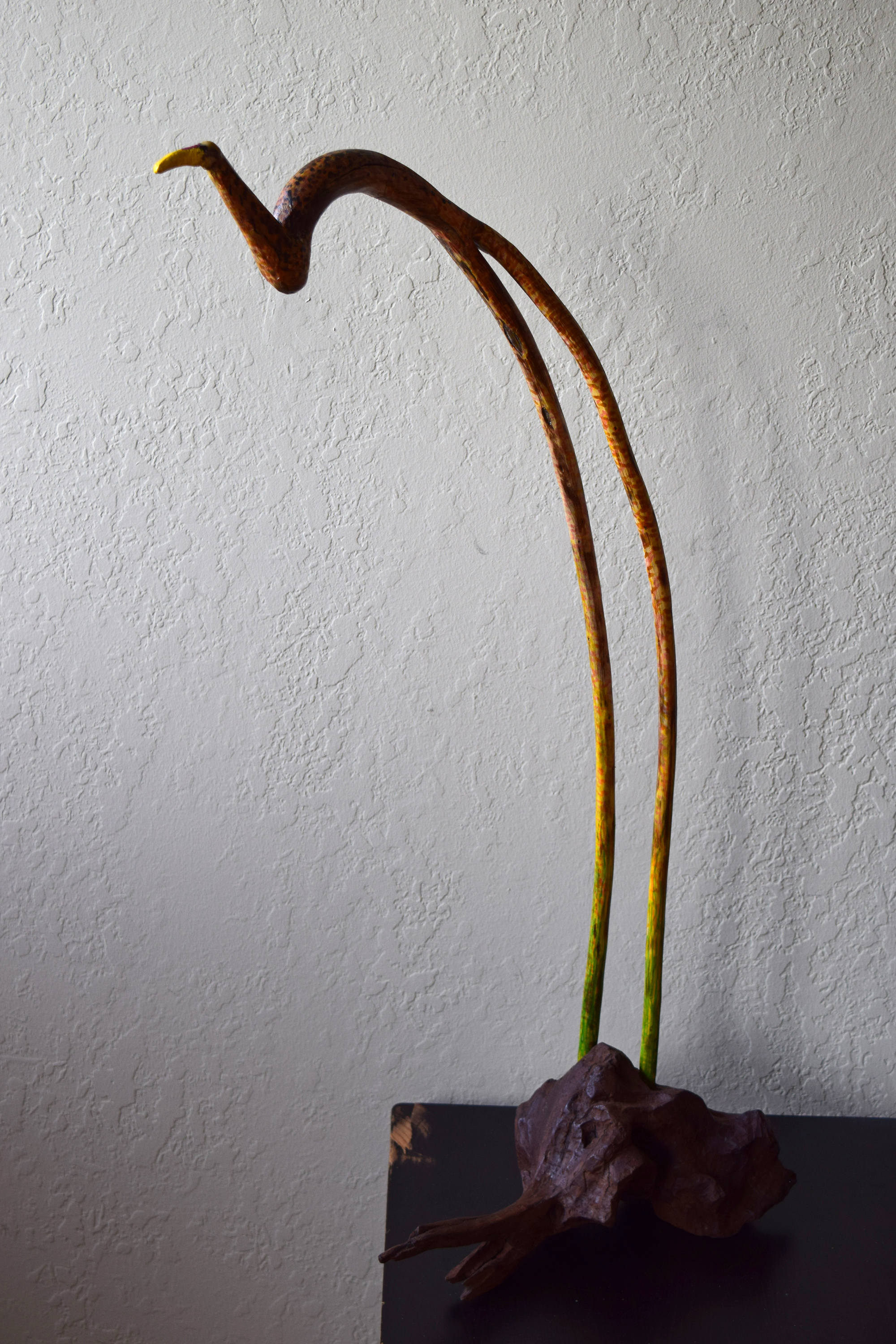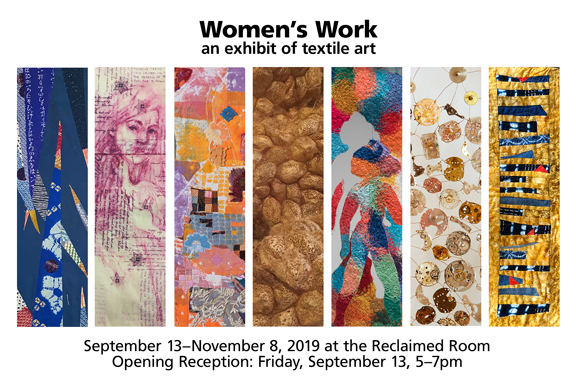
For our next show, we will be featuring textile art by these fine artists: Dale Eastman, Rachel Leibman, Karin Lusnak, Stacey Shuster, Ileana Soto, Sharon Steuer and Ellen Weinstein. The show opens with its opening reception on Friday, September 13th and will run thru November 8th, 2019. We will also host an artist’s talk Sunday, October 6th, from 1 – 3pm. This group of artists was curated by Rachel Leibman and she had this to say of its inspiration: “I have long been enthralled by fiber art – the weavings of indigenous peoples around the world, the quilts of Gee’s Bend, Renaissance tapestries and oriental carpets. Textile work straddles the boundary between craft and art, frequently created for functional purposes, but still with a strong sense of design and imagination. Different regions and tribes have their own unique styles for creating fiber art, often passed down from generation to generation. With globalization and modernization, these traditions are sadly being forgotten. This has encouraged me to sew, weave and dye, and to seek out like-minded people.”
“This exhibit features textile artists who work with reclaimed or recycled materials in creative and surprising ways. These artists approach their artwork with a nod to long established crafts such as sewing, quilting, embroidery and dyeing, but each artist brings a singular and contemporary approach to a traditional, and overwhelmingly women’s, mètier. I have selected artists who work with different types of source materials and produce very different kinds of creations. Some use fabric and thread while others create textiles from non-traditional materials such as discarded moth cocoons or vintage watch parts. Some of the pieces are vibrant and colorful, while others are detailed and meticulous. All are interesting, original and innovative.”

Seeding the future, by Dale Eastman
Dale Eastman
Objects evoke an ambivalence in me. Even still, for more than a decade, I’ve spent half of my time making some sort of object, typically using natural, electronic or salvaged materials. Discarded moth cocoons have been my material of choice for the last several years. Like so many soft sculptures made from fibrous materials, these cocoon pieces constantly shape shift each time they’re moved. While sewing, I sometimes hold the pieces out in front of me, almost a gestational pose, and it’s true that the proliferating, generative nature of the material and the work is as mesmerizing to me as the second hand on a clock. As I sew, I periodically wonder about the point at which a particular artwork began, where it will end, or if it ever will. Isn’t each piece often, in some way, a continuation of another? Some of the cocoons are riddled with holes, allowing the viewer to see both the outside and the inside of the work. For me, though, the artwork’s hollow, lacy ephemerality has an additional focus: the space that arises around the work itself. Could it be that it is this space that I’m most in search of (even longing for?) when I’m creating artwork? Objects are necessary: they define cultural space and provide helpful boundaries that direct and delineate. But they can also circumscribe and calcify; they even risk fitting us with cataracts that blind us to what isn’t yet. That’s a shame because what I’m learning from making objects is that what isn’t is often just as important as what is.
I’m a multimedia artist and a fiction writer who originally trained as a seamstress. Frequently, I combine these practices in order to explore the subtle or overlooked connections between different aspects of our lives. My artwork has been in numerous group and solo shows the San Francisco Bay Area.
daleeastman.com
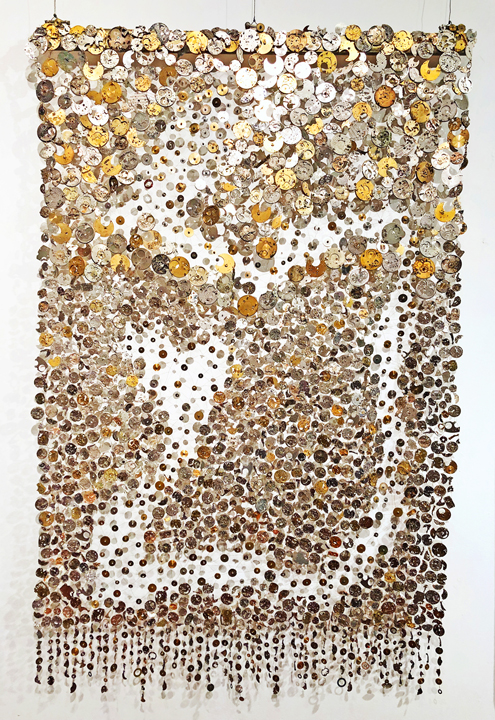
Temporal Tapestry, by Rachel Leibman
Rachel Leibman
I am a mixed media artist, living and working in San Francisco. After becoming enamored with textile arts during travels around the country and abroad, I taught myself to sew and dye with natural materials. My most recent project is the “Chrono” series. I make quilts and weavings embroidered with vintage watch parts. I also create textiles by weaving together watch parts with wire and using this new textile to construct tapestries and hanging sculptures.
I love working with watch parts not only because they are beautiful and exquisite, but because they provide such a wonderful metaphor for so many aspects of life. Our stories are bound up in time. No matter what we do, time marches on, leaving us with memories and hopes.
rachelleibman.com
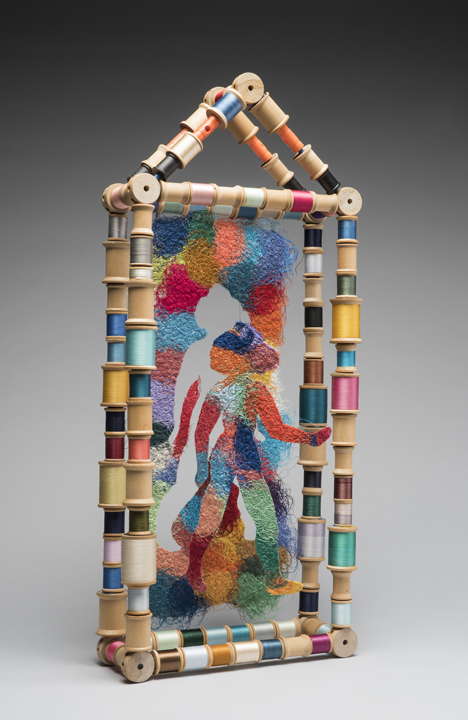
Stepping Out, by Karin Lusnak
Karin Lusnak
Originally from Pennsylvania, I worked as a Research Associate in genetics and molecular biology laboratories at the University of California in Berkeley until retiring in 1998. During this time, I developed an interest in textile arts as a student at Pacific Basin School of Textile Arts and eventually received my MFA from California College of Arts and Crafts, now CCA.
While at CCA I discovered how much I enjoy three-dimensional work. I created “Can’t Becomes Act” sometime after graduation. This piece speaks for itself.
Although my love of fiber art often takes me toward two dimensional pieces, my desire to create something sculptural again coincided with my desire to let things go. This led me to build a house with thread spools that belonged to my mother, to another dear friend, and to myself. “Stepping Out” is and will always be filled with memories. The image of the house is often described as a symbol of the self and the figure of the woman represents my effort to move forward.
Another of my pieces, also a house, is built with wine corks and recycled denim. It addresses many issues from politics to personal. A lovely and gentle song based on Paul Gauguin’s painting called “Where Do We Come From? What Are We? Where Are We Going?” served as my inspiration.
“Getting THERE From HERE” describes a personal effort to move forward in life. The letters have an inner structure of sycamore branches covered with layers of fragile, pliable fabric sewn together and representing personal history and the multitude of experiences that compose a life. Bound with colorful silk fiber, the letters stand upright suggesting solidity, strength and perseverance.
KarinLusnak.com
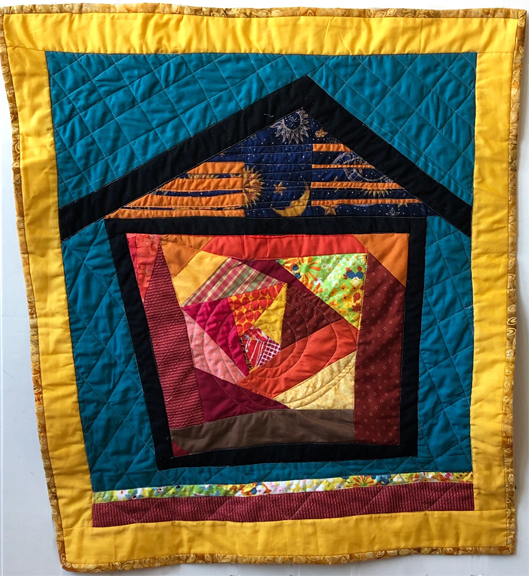
Sanctuario, by Stacey Shuster
Stacey Shuster
My passion for machine quilting started in eighth grade home economics, I love the way you can create warmth and beauty for every day use, transforming old and new fabrics as women throughout the centuries have done. Quilting has largely been women’s work – from slaves in the south to immigrant women in northeast mill towns to plantation wives and pioneer women to contemporary art quilters – all with little recognition.
For this exhibit, I used donated quilts, fabric pieces and scraps to refashion them into entirely different creations. Inspired by traditional quilt patterns as well as the Gee’s Bend quilting collective of Alabama, I aim to demonstrate ways in which reclaimed fabrics focus on the current immigrant experience. As with the Underground Railroad, quilts can be used to guide endangered immigrants to safety and sanctuary. I want my quilts to tell stories that reflect and comment upon what is happening in the larger world.
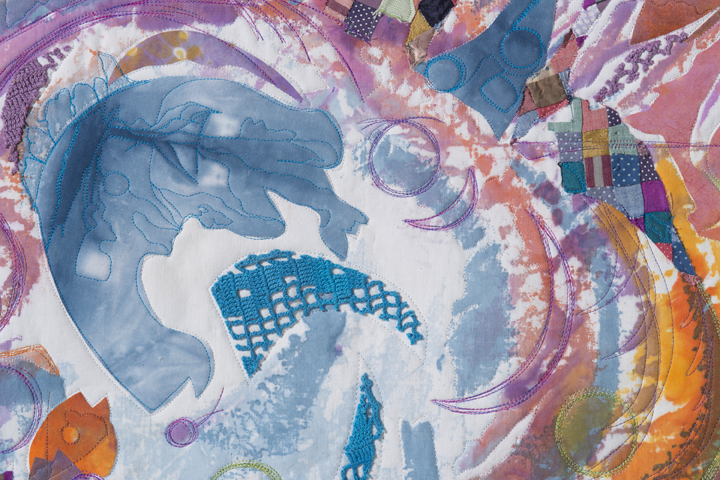
Women’s Work: Creativity, by Ileana Soto
Ileana Soto
Art has always been a theme, from the use of thread and color under the guidance of my Romanian grandmother, to a degree in Art History, from a year’s study at the California College of Art and Craft (now California College of Art) to the use of art therapy as a communication tool in my previous work as a licensed Marriage and Family Therapist. I’ve created textile art in the forms of woven cloth, fiber sculptures, sewn collages, pieced quilts, and now “art quilts”.
I am passionate about bringing the themes of culture, community and Climate Change/Crisis to an “alert” stage for viewers of my pieces. I discover, inform, and encourage activism through a process of internal and external artistic expression.
My work is tied to a commitment to personal deepening and exploration. I strive to create a dialogue between myself and the cloth as I develop the piece. Layers are generated, reflected in the layering of dye, of paint, of cloth over cloth. Once the piece is completed, I listen to the viewer’s perspective and participate in that dialogue.
With my invitation to join the “Women’s Work” exhibit, I have become interested in the use of recycled materials. Each piece is done on an originally white vintage cotton or linen textile, adding fused elements that were given to me, or recycled from my own original printed fabrics, “left over” from other art pieces. I enjoyed the layering of history, known and unknown. There will be more of these pieces in my future!
My mentors include surface design artist Jane Dunnewold, Dutch batik artist Els Van Baarle, quilter and artist Angie Woolman (she has been my quilter for over 12 years), and educator/founder of Formative Psychology, Stanley Keleman, now deceased. They, coupled with my personal work in therapy, help me focus, articulate, and form an expression of the complexity of our actions as they influence our internal and external worlds.
ileanasoto.com
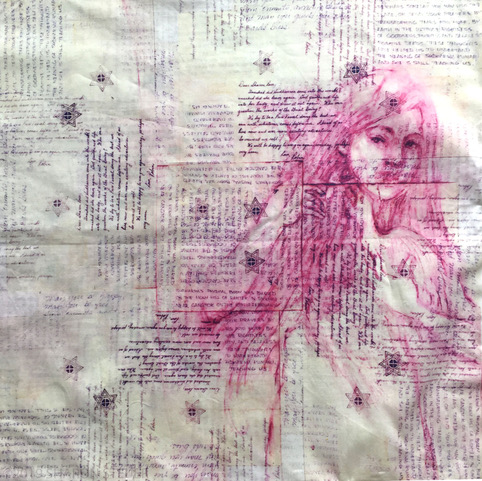
I Will Fly Away, by Sharon Steuer
Sharon Steuer
For more than thirty-five years I’ve explored techniques that allow me to move back and forth between traditional and digital tools to merge painting, drawing, printmaking and collage. In the two smaller works from my ongoing “Letters From My Father” series I recreate imaginary worlds of childhood from adult chaos. Objects and letters sent to me as a child by my estranged father form the metaphorical (and sometimes literal) background for these works. “Branded By Her Genetic Mutation” is from my “For Our Own Good” series that poses taboo questions surrounding medical privacy and genetic surveillance. In 2011, I was diagnosed with a BRCA1 genetic mutation through my Jewish ancestry. With an exponentially increased risk of developing ovarian and/or breast cancer, medical professionals advised significant surgery and genetic surveillance “for my own good.” “Branded” is a unique monoprint-transfer created by digitally collaging a watercolor-pencil drawing with a portion of my genetic code (downloaded from an unsuccessful attempt by Myriad Pharmaceuticals to patent my genetic mutation).
sharonsteuer.com
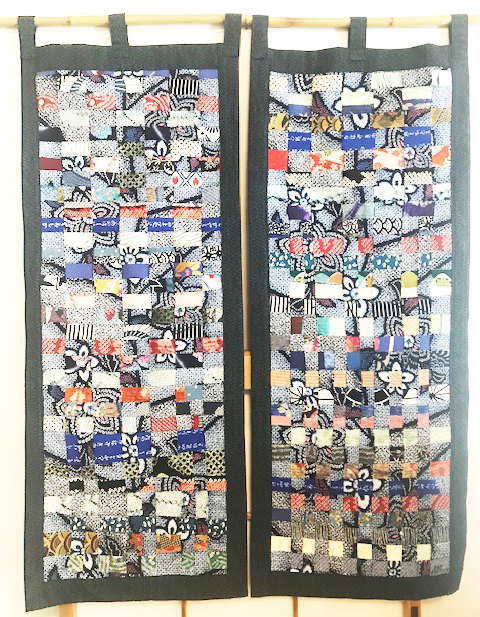
Over Under 1, by Ellen Weinstein
Ellen Weinstein
My art is driven by my extensive interest in textiles. I sew, quilt, weave, dye, paint and print on fabrics. My ex-mother-in-law, Barbara Eiko (Hiura) Fukuchi shared her Japanese/Hawaiian culture and fabric, warm smile and oishii (tasty) tsukemono with me. She inspired my interest in Japanese art, specifically textiles. I fell in love with Shibori tie-dyeing after seeing an exhibit curated by Yoshiko Wada many years ago. Recently, I have been learning Japanese language and calligraphy, which enhances my artistic perspective and is incorporated into my art.
In this exhibit, I deconstructed vintage Japanese kimonos and textiles to create unique appliqué art and noren curtains. Noren are fabric dividers hung between rooms, on walls, in doorways, or in windows. I appreciate that they are functionally designed to serve as signs with store names and logo, protect store goods from the elements, be room dividers, and beautify homes. My art is not strictly traditional. I embrace an aesthetic of random surprise and create art that is imperfect, with elements of East and West cultures.
For the past 30 years, I have taught art to children of all ages at the de Young Museum, Legion of Honor, and Clarendon Elementary School in San Francisco. I have a degree in Drawing and Painting from the San Francisco Art Institute.
